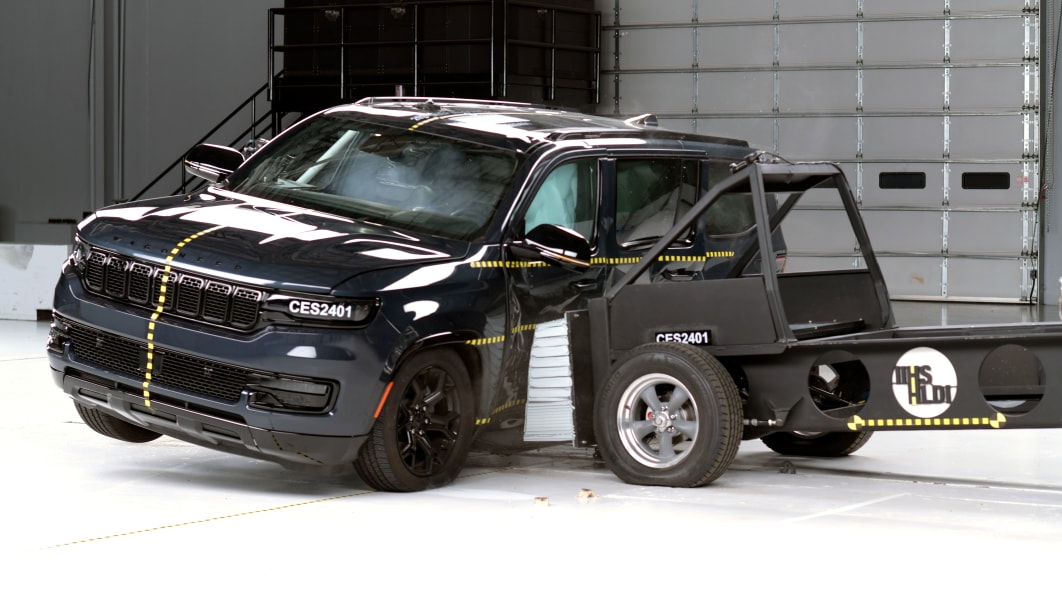Bigger isn’t always better when it comes to crashing into a stationary object, according to the Insurance Institute for Highway Safety. The agency tested three popular body-on-frame SUV models and concluded that some of these behemoths fail to protect second-row occupants.
“The huge mass of these large SUVs provides some additional protection in crashes with smaller vehicles, though that also means they present more danger to other road users. The flip side of their large size is that there is a lot more force to manage when they crash into a fixed obstacle, like a tree or bridge abutment or the barrier we use in our front crash tests,” explained IIHS president David Harkey.
Crash-test dummies were put into three models: the Chevrolet Tahoe, the Ford Expedition, and the Jeep Wagoneer. The latter qualified for a coveted 2024 Top Safety Pick award, though it didn’t get a Top Safety Pick+ award, and the first two didn’t receive either distinction.
Starting with the Wagoneer, the IIHS gave it the highest rating of Good in the small overlap – front and side-impact tests and the second-lowest rating of Marginal in the updated moderate overlap – front test. The headlights fitted to upmarket trim levels were rated as Good, while the ones that come standard on the more basic versions got the second-highest rating of Acceptable. The forward collision warning system, which can brake if it detects an impact with a pedestrian is imminent, received a Good rating as well, while the seat belt chime is Marginal.
The Tahoe received an Acceptable rating in the small overlap – front test, a Poor rating (the lowest that the IIHS gives out) in the moderate overlap – front test, and a Good rating in the side-impact test. Its headlights are rated as Poor, its forward collision warning system is Marginal, and its seat belt chime is Acceptable. The IIHS notes that “there was enough intrusion into the footwell that injury measures taken from the driver dummy showed a substantial risk of lower leg injuries.” It adds that “performance was worse in the passenger-side test.”
As for the Expedition, it scored a Marginal rating in the small overlap – front and moderate overlap – front tests and a Good rating in the side-impact test. Its headlights are Marginal, its forward collision warning system got a Good rating, and its seatbelt chime is considered Good.
It’s the safety of second-row occupants that the IIHS is most concerned about. It concluded that in the three SUVs, “measurements taken from the rear dummy showed a fairly high risk of chest injuries because of high seatbelt forces.” Measurements taken from the dummy seated in the Tahoe’s second-row “showed a high risk of head or neck injuries” along with a risk of abdominal injuries. While the Expedition is the only model in this group with second-row belt pretensioners, it didn’t do a better job of protecting second-row occupants than its rivals.
Airbag-related problems were also reported during the crash tests. The IIHS notes that the driver dummy’s head hit the steering wheel through the airbag in the Wagoneer, and it noticed that the driver’s side curtain airbag did not deploy during the test in the Expedition.
To earn a Top Safety Pick+ rating, a vehicle must be rated “Good” in both the small overlap and updated side crash tests and “Acceptable” or “Good” in the updated moderate overlap front test and front pedestrian crash prevention tests. Its standard headlights must also be rated “Acceptable” or “Good.” Previously, any passing headlight configuration would qualify, but only for that trim.
Related Video

